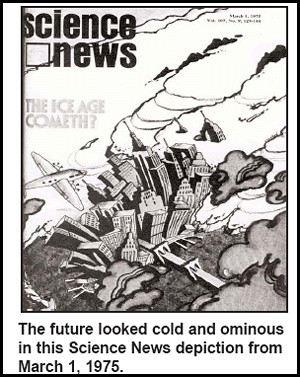Alldeles nyligen (17 juni) accepterades Svensmark, Bondo och Svensmarks studie Cosmic ray decreases affect atmospheric aerosols and clouds för publikation i Geophysical Research Letters. En draft återfinns här.
Abstract:
Close passages of coronal mass ejections from the sun are signaled at the Earth’s surface by Forbush decreases in cosmic ray counts. We find that low clouds contain less liquid water following Forbush decreases, and for the most influential events the liquid water in the oceanic atmosphere can diminish by as much as 7%. Cloud water content as gauged by the Special Sensor Microwave/Imager (SSM/I) reaches a minimum ¼7 days after the Forbush minimumin cosmic rays, and so does the fraction of low clouds seen by the Moderate Resolution Imaging Spectroradiometer (MODIS) and in the InternationalSammanfattning:
Satellite Cloud Climate Project (ISCCP). Parallel observations by the aerosol robotic network AERONET reveal falls in the relative abundance of fine aerosol particles which, in normal circumstances, could have evolved into cloud condensation nuclei. Thus a link between the sun, cosmic rays, aerosols, and liquid-water clouds appears to exist on a global scale.
Our results show global-scale evidence of conspicuous influences of solar variability on cloudiness and aerosols. Irrespective of the detailed mechanism, the loss of ions from the air during FDs reduces the cloud liquid water content over the oceans. So marked is the response to relatively small variations in the total ionization, we suspect that a large fraction of Earth's clouds could be controlled by ionization. Future work should estimate how large a volume of the Earth's atmosphere is involved in the ion process that leads to the changes seen in CCN and its importance for the Earth's radiation budget. From solar activity to cosmic ray ionization to aerosols and liquid-water clouds, a causal chain appears to operate on a global scale.
Att solaktivitet styr klimatet har mycket forskning redan påvisat. På senare tid t ex Le Mouel et al här och här, Nir Shaviv här, Palle et al i studier nämnda här och här liksom andra studier som bl a visar att solen styr havsströmmar.
I Palle et al's studie under första länken ovan visas att förändring i moln i nutid haft lika stor påverkan på klimatet som (enligt bl a IPCC) hela ökningen av atmosfärisk CO2 sedan 1800-talet. Responsen på denna energiändring (molnförändring 1993-2001) visar att klimatet måste domineras av stabiliserande negativ återkoppling.
Svensmark och forskningsprojektet CLOUD tog förresten Anthony Watts upp häromdan!
(HT: Greenie Watch)
-----------------------------------------------------------------------------------------------------------------------
Andra bloggar om: vetenskap, klimat, klimatet, solen, moln, kosmisk strålning, kosmoklimatologi, Henrik Svensmark, klimatforskning


 Climategate -- The Crutape Letters, by Steven Mosher and Thomas W. Fuller
Climategate -- The Crutape Letters, by Steven Mosher and Thomas W. Fuller
 The Deniers
The Deniers


No comments:
Post a Comment
Anonyma, hitta på och ange signatur. Annars gäller att någorlunda hålla sig till ämnet och visa vanlig hyfs.
Note: Only a member of this blog may post a comment.